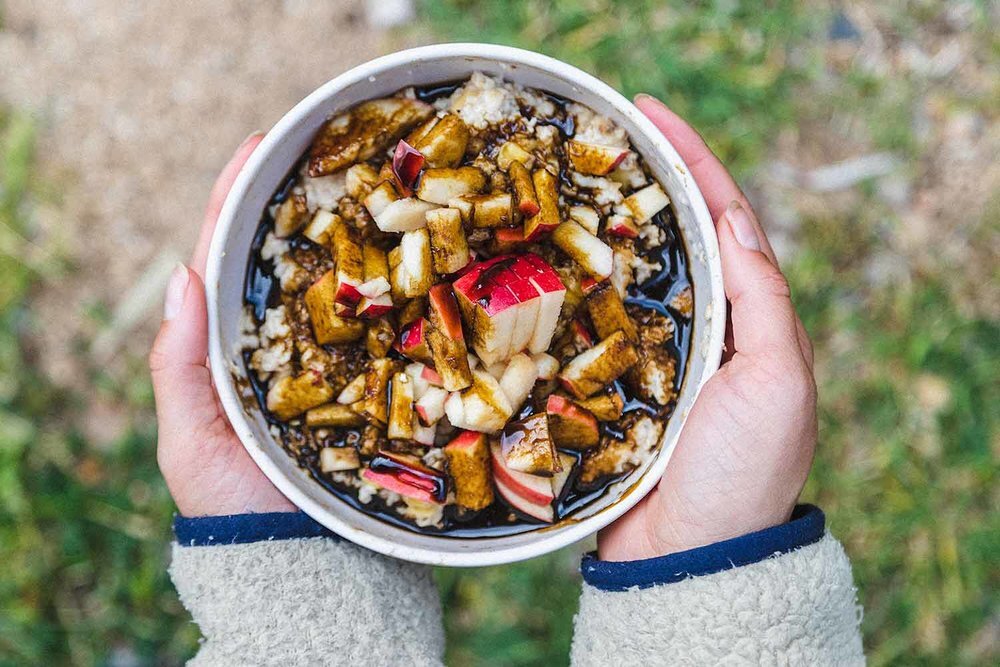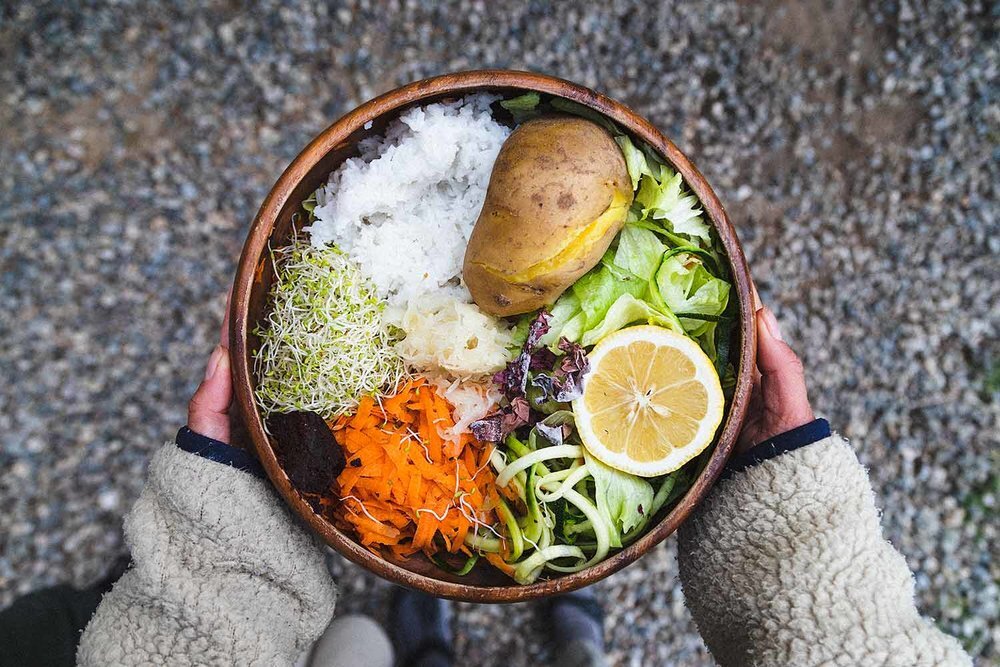What I Eat in a Day - Vegan, No Oil, Low-Fat - Basic Meals
Healthy eating can get really confusing, so Lou and I thought we would start our own version of the "What I Eat in a Day" vlog that is so common on Youtube. In these videos, we will walk you through our normal meals, how we make a low-fat, oil-free vegan diet work for us, and especially how we eat to limit Lou's Rheumatoid Arthritis symptoms.
If you're new here, I'm Dana and my husband Lou and I are currently living in a 39 year-old Mercedes camper van that we converted ourselves last year while living in southern Spain. We have been vegan for over 5 years, but it was only in the last few that we realized that we could manage all of Lou's arthritis symptoms - swollen joints, frequent muscle tears, aching feet/fingers/spine, - by following a specific diet protocol called the Paddison Program. If you want to read more about Lou's health journey you can explore our Health section I created a few years ago and this blogpost on his recent water fast.
[youtube=://www.youtube.com/watch?v=uTLYjNsFE8c&w=854&h=480]
We are now back on the Paddison Program 100% and have been for over a month and we wanted to chronicle Lou's health journey this time around because the first time we went through it, he was in such a poor state that we couldn't focus on anything but healing. This time though, he is feeling great, we're back on track, and it feels much more sustainable because we're focusing on making things as simple as possible. And that gets me to today's What I Eat in a Day - an example of the foods that we actually eat not anything jazzed up fancy for Instagram.
For breakfast almost every day in the van we have some form of oatmeal, but today we had our basic go-to version. Oatmeal with banana, fresh chopped up apple, topped with a heaping tablespoon of blackstrap molasses. Blackstrap molasses is an incredible source of B vitamins, calcium, magnesium, and iron.

Easy Oatmeal Recipe
Serving Size: 1 Bowl
Ingredients:
1 1/2 cup of organic oats
2 cup boiling water
1/2 teaspoon organic cinnamon
One organic super spotty banana sliced thinly
1/2 organic apple chopped
1 heaping tablespoon organic blackstrap molasses
Instructions:
1. Add oats, cinnamon, and banana to a bowl
2. Add boiling water to oat mixture, quickly stir to combine, and cover with a plate or bowl. This is my quick and easy way to make oats, inspired by cup of noodles. It also has the huge perk that you don't have to clean up a dirty pot (which in our tiny kitchen I greatly appreciate!)
3. Wait for 5 to 10 minutes and then top with a little bit extra left over hot water to get the texture to your preferred consistency.
4. Top with molasses
Most days in the van, lunch, and dinner look exactly the same. This might seem boring, but in reality, Lou and I like to spend the majority of our time outside filming or inside editing as we possibly can, so the less time in the kitchen the better.
After a few years on the Paddison Program, the key takeaways for making a meal reduce inflammation are:
-
No oil
-
No animal products of any kind
-
At least 1 cup of leafy greens
-
Aid in digestion which helps heal leaky gut
-
Work as a pre-biotic
-
Great source of micronutrients
-
Give the body a boost of enzymes (like all raw food, and that’s why you see us incorporating raw carrots, cucumber, or zucchini into most salad bowls)
-
-
Alfalfa sprouts or Mung bean sprouts
-
I used to make these myself in Berlin, but in the van, it's been too tricky. When we can find them organic we buy them, but if not I don't fret about it.
-
-
Organic Miso
-
Natural source of probiotics to support gut health.
-
We eat it on the side of most of our meals, but if I add it to a soup I add it at the end once the broth has cooled a bit so that the boiling water doesn't kill the enzymes.
-
-
Dulse (sea vegetable)
-
Amazing source of minerals, especially potassium.
-
Our staple lunch/dinner meal always starts with a base of leafy greens, plus spiralized raw vegetables, sprouts, miso, and dulse. Next is the part of the meal that actually has calories to sustain your life - grains and starchy vegetables. We normally eat basmati rice or quinoa. I’m not sure exactly our portion size but I’d say at least 2 cups cooked of a grain. Lastly we’ll have either boiled sweet potato, pumpkin, or white potato. If we weren't in the van and had access to an oven, these vegetables taste amazing roasted! But for us this is what a normal lunch or dinner looks like:

The one last key thing for the Paddison Program and reducing inflammation in the gut is to chew your food - A LOT. This might seem strange to say, but you want to be chewing your food between 30 and 50 times a bite (and more if you're in the early stages of trying to heal your RA). This way your saliva can start breaking down the food, your stomach can get primed and start producing all the acids it needs to aid digestion. This is probably the hardest part for Lou and I because with all the salad and sprouts this ends up forcing us to dedicate more time than your average American does towards eating, and sometimes you just don’t want to chew anymore! But my stomach thanks me when I do take the time to properly slow down and chew my food. Also important for digestion is to eat in a calm environment where you can focus on your meal. This mean sadly not in front of your favorite Youtube video or the TV. It might be hard to build this habit at first, but it is worth it when you go through all the effort to make healthy, nourishing meals to really appreciate them each and every day.
Hope you enjoyed the first edition of our What I Eat in a Day series and can't wait to share more healthy vegan recipes with you soon.
